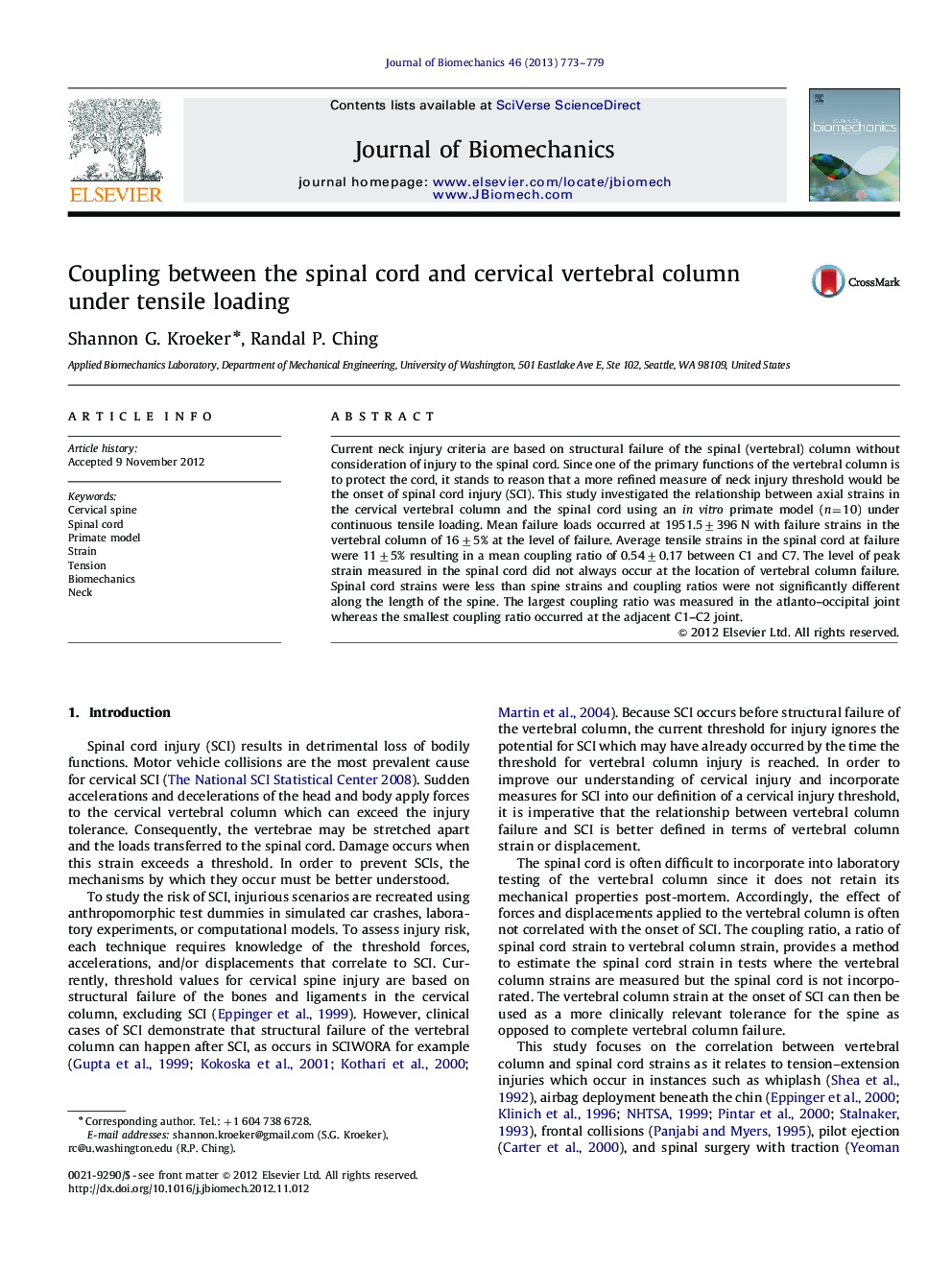| Article ID | Journal | Published Year | Pages | File Type |
|---|---|---|---|---|
| 10432946 | Journal of Biomechanics | 2013 | 7 Pages |
Abstract
Current neck injury criteria are based on structural failure of the spinal (vertebral) column without consideration of injury to the spinal cord. Since one of the primary functions of the vertebral column is to protect the cord, it stands to reason that a more refined measure of neck injury threshold would be the onset of spinal cord injury (SCI). This study investigated the relationship between axial strains in the cervical vertebral column and the spinal cord using an in vitro primate model (n=10) under continuous tensile loading. Mean failure loads occurred at 1951.5±396 N with failure strains in the vertebral column of 16±5% at the level of failure. Average tensile strains in the spinal cord at failure were 11±5% resulting in a mean coupling ratio of 0.54±0.17 between C1 and C7. The level of peak strain measured in the spinal cord did not always occur at the location of vertebral column failure. Spinal cord strains were less than spine strains and coupling ratios were not significantly different along the length of the spine. The largest coupling ratio was measured in the atlanto-occipital joint whereas the smallest coupling ratio occurred at the adjacent C1-C2 joint.
Related Topics
Physical Sciences and Engineering
Engineering
Biomedical Engineering
Authors
Shannon G. Kroeker, Randal P. Ching,
